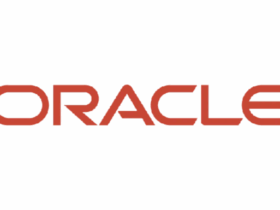Riding the Wave of AI Euphoria
The artificial intelligence revolution has captured investor attention like few themes before it. From powering chatbots and data centers to reshaping industries such as healthcare, logistics, and finance, AI is seen as the defining technology of the decade. Naturally, this has triggered an explosive rally in AI-related stocks, led by the so-called Magnificent Seven tech giants.
But are we in the middle of a healthy innovation cycle, or approaching the frothy stages of a bubble? According to Bank of America strategists led by Michael Hartnett, history suggests there may still be room to run before valuations reach their true peak. For investors, that means opportunities remain — but so do the risks of overexposure.
Lessons From Past Equity Bubbles
Bank of America’s analysis draws on nine major equity bubbles since 1900. On average:
- Stocks gained 244% from start to peak.
- Peak valuations reached a P/E ratio of 58.
- Stocks traded about 29% above their 200-day moving average.
By comparison, today’s AI-driven rally hasn’t yet reached those extremes. That means the rally could continue — though investors must tread carefully.
The Magnificent Seven: Today’s Bubble Proxy
The Magnificent Seven (Apple, Microsoft, Amazon, Alphabet, Meta, Nvidia, Tesla) serve as the best barometer for the current AI rally. Since March 2023, these stocks have:
- Risen 225% in value.
- Reached a P/E ratio of 39.
- Traded 20% above their 200-day moving average.
By historical standards, this implies there’s still room before valuations stretch into peak bubble territory. Yet with multiples already elevated, risk management becomes essential.
Why Investors Keep Piling Into Big Tech
Despite repeated warnings of an impending tech bubble, the Magnificent Seven continue to attract capital. Several factors explain this resilience:
- AI leadership: These companies dominate AI infrastructure, chip design, and software ecosystems.
- Strong balance sheets: Unlike the Dotcom era, today’s leaders are flush with cash.
- Resilient earnings: Profits remain strong, even during market pullbacks.
- Policy backdrop: A relatively laxer tax and regulatory environment under the Trump administration supports big tech.
- Falling interest rates: The Fed’s recent rate cut, its first since December, has boosted risk appetite.
Together, these drivers have created an environment where AI hype is backed by fundamentals, even if valuations are stretched.
Setbacks Along the Way
The AI rally has not been a straight line. Market shocks have temporarily stalled momentum:
- In January, Chinese startup DeepSeek rattled the market with its efficient AI model.
- In March and April, tariff uncertainties triggered a sharp sell-off.
- By early April’s “Liberation Day” rout, the Magnificent Seven plunged before rebounding 60% in the months since.
Each pullback has so far proven to be a buying opportunity, underscoring investor conviction in AI’s long-term promise.
| Metric | Historical Bubble Average* | Current AI Rally (Magnificent Seven) | Takeaway |
|---|---|---|---|
| Price Gain (Start → Peak) | +244% | +225% since Mar 10, 2023 | Rally is large but hasn’t matched average bubble peaks. |
| Peak P/E Ratio | 58x | 39x (group average) | Valuations are elevated but below historic bubble extremes. |
| Distance Above 200-Day MA | +29% | ~+20% | Momentum strong; still room before typical “peak bubble” stretch. |
| Recent Pullbacks & Shocks | Frequent late-cycle volatility | January model scare; Mar–Apr tariff shock; 60% rebound since early April | Dips bought; trend intact despite shocks. |
| Macro/Policy Backdrop | Liquidity + optimism | Rate cut; supportive tax/regulatory tone; resilient earnings | Policy tailwinds extend risk appetite. |
| *Historical averages from nine equity bubbles since 1900 (per BofA). Data for educational purposes only, not investment advice. | |||
How to Play a Potential AI Bubble
Bank of America doesn’t deny the risks of an AI bubble, but it argues that investors can position wisely to capture gains while managing downside.
1. The Barbell Strategy
A barbell approach involves balancing high-growth tech exposure with cheap, distressed value plays. The rationale: asset bubbles can boost global growth, benefiting undervalued markets.
Historical example: During the Dotcom bubble, the only market to outperform the Nasdaq was Russia, then deeply undervalued after a debt crisis.
Today’s potential equivalents include:
- Brazilian equities (P/E ratio ~9).
- British stocks, trading at attractive valuations.
- Global energy companies, offering strong cash flows at low multiples.
2. Shorting Corporate Bonds of Overhyped Stocks
Hartnett points out that during the Dotcom era, tech corporate bonds began underperforming well before the bubble burst. Credit markets often sniff out balance sheet stress earlier than equities.
By shorting bonds of over-leveraged or overvalued AI firms, investors may hedge against a sharp correction in stock prices.
| Strategy | Idea in Practice | Why It Helps | Key Risks to Monitor |
|---|---|---|---|
| Barbell Allocation | Pair AI leaders with cheap value markets (e.g., Brazil low P/E, select UK equities) and global energy. | Captures upside from innovation while cushioning with undervalued cash-flow assets. | Commodity swings; FX risk; value traps in cheap markets. |
| Credit as an Early Warning | Short/underweight bonds of frothy tech where leverage or cash burn rises. | Credit often prices deterioration before equities (Dotcom precedent). | Borrow costs; short squeezes; bond-specific liquidity. |
| Diversified AI Exposure | Use broad AI/thematic ETFs to avoid single-name risk; include picks-and-shovels (chips, fabs, power, cooling). | Reduces idiosyncratic blowups; benefits from ecosystem growth. | ETF concentration; cyclical demand for data centers. |
| Defensive Counterweights | Tilt to healthcare, utilities, staples; add cash or T-bills for optionality. | Buffers drawdowns; dry powder for buying dips. | Opportunity cost if tech keeps ripping; sector rotation risk. |
| Risk Hedges | Consider tail hedges (index puts), gold/energy sleeves, and stop-loss discipline. | Limits downside in air-pocket drops; diversifies macro shocks. | Hedge costs; timing and whipsaw risk. |
| For illustration only. Not investment advice. Align strategies with risk tolerance, time horizon, and objectives. | |||
Other Strategies to Consider
In addition to Bank of America’s recommendations, investors may explore:
- Diversified ETFs: Gaining exposure to AI leaders while avoiding concentration risk.
- Sector rotation: Balancing tech with defensive sectors like healthcare and utilities.
- Hedging with commodities: Gold and energy often act as hedges during volatility.
- Cash reserves: Keeping dry powder allows investors to buy into dips when corrections occur.
Risks of Chasing the AI Rally
While AI remains transformational, chasing the rally without caution carries risks:
- Valuation risk: Current multiples already assume high growth.
- Competitive pressure: New entrants like DeepSeek or open-source AI could disrupt incumbents.
- Regulatory risks: Governments may clamp down on monopolistic practices or AI safety concerns.
- Geopolitical risks: U.S.-China tensions could impact chipmakers like Nvidia.
Investors should remain realistic: not every AI company will be a winner, and some may fail outright.
Final Thoughts: Navigating the AI Boom Without Getting Burned
The AI stock rally may have more room to run, with history suggesting valuations could climb further before hitting bubble territory. Yet, as Bank of America notes, smart investors must prepare for volatility.
The Magnificent Seven remain the best proxy for AI’s explosive growth, but a prudent strategy involves hedging with undervalued global markets, rotating into defensive sectors, and monitoring credit markets for early warning signs.
For long-term investors, the key is to balance excitement with discipline. AI may transform industries and fuel enormous wealth creation, but no rally is immune to corrections. By staying diversified and prepared, investors can ride the AI wave without getting caught in the undertow when the bubble eventually bursts.
Reference : Colin Laidley






